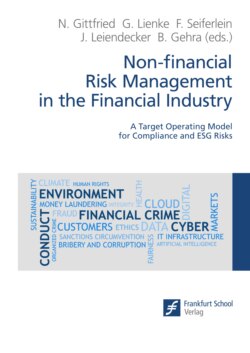Читать книгу Non-financial Risk Management in the Financial Industry - Группа авторов - Страница 15
На сайте Литреса книга снята с продажи.
1.9 Environment, social and governance: Implications for effective risk management
ОглавлениеWith the issuance of the UN Sustainable Development Goals, the Paris Climate Agreement in 2015 and, more recently, the COP26 climate summit in Glasgow in 2021, ESG issues have risen to the top of the agenda of the global financial services sector. Of all ESG topics, climate change has the highest profile – for good reason. The risks associated with climate change and their implications for the global financial system’s stability are now universally acknowledged. In addition, financial institutions are set to play a pivotal role in global efforts to adapt to climate change as well as mitigate its negative effects. Adaptation in this context requires financial institutions to support clients in managing the physical risks associated with the impact of climate change (such as destruction of assets by natural disasters). Climate change mitigation, on the other hand, requires a transition to a carbon-neutral economy which will in turn involve trillions of dollars in funding. Directing private funding to sustainable activities is a monumental effort that requires both a cross-border coordination and support from the financial services industry.
Chapter 15 begins with a review of the current ESG regulatory landscape in selected jurisdictions, noting the different levels of regulatory advancement but also the breakneck speed at which new sustainable finance regulations are being rolled out. These and their impact from the standpoint of compliance will be a key theme going forward. The chapter then examines the most common challenges associated with ESG implementation, such as divergent approaches to materiality of ESG information, lack of uniform taxonomies of sustainable activities, scarcity of ESG data and the resulting reliance on third party information providers. The chapter also covers the voluntary disclosure standards and frameworks which came to the fore in recent years, and provides guidance on their application and use.
The chapter continues to analyse the key components required for a successful green transition, noting the importance of having a clear ESG strategy supported by a robust governance model. The right resources, technology, culture and ecosystems are key enablers of an ESG transition, and they can also create new value-generating opportunities.
Fußnoten:
[1] BCG 2021a.
